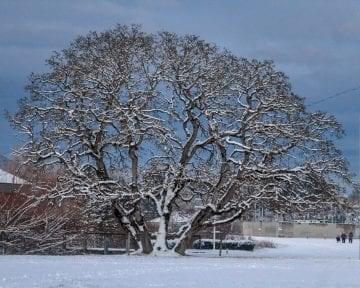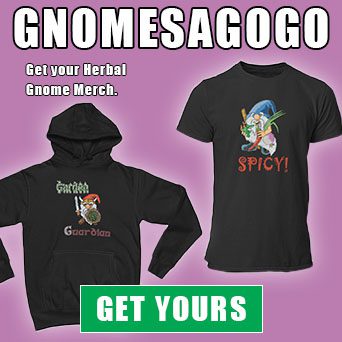
My adopted town of Eugene, Oregon doesn’t get much snow. Our regional weather of choice is rain. We usually have rain of varying temperatures all year round. I am used to wildcrafting in the rain. I don’t like it but it happens none the less. About once a year it snows. This year we went from zero to 12 inches of that fluffy white horror overnight. Then it froze. Eugene stopped in its tracks. Heavy weight native trees like Big Leaf Maples dropped branches that crushed cars, downed power lines and blocked roads around the city.
As an herbalist, my first thought was to check on friends and neighbors without food, water or medicine. As I slogged through the icy streets, I kept my eye out for herbal medicine that was ready for harvesting. The snow-covered landscape may look barren to the inexperienced herbalist but seasoned plant hunters are busy wildcrafting in winter.
Winter’s Pruning Shears
Snow and ice bring branches down that have valuable bark, lichen and other botanical wonders growing on it. With a “waste not, want not” mentality, herbalists can bring home a wealth of medicinal wonders simply by clearing debris from the front yard. I wouldn’t cut a branch of White Oak from in summer just to strip it of the analgesic inner bark. My needs do not take precedent over the needs of the wildlife that nests in these gentle giants. When winter does the pruning, it seems foolish to let a good astringent like oak be wasted as firewood.
Usnea lichen is best harvested after a storm. This hardy antibiotic peppers the ground after wind and heavy rains tear through the valley. The results needs quite a bit of polishing. I have spent a lot of time cleaning mud and decayed plant parts after these forays. Lichen that falls into snowbanks are cleaned and frozen – just right for preserving.
Check out The Practical Herbalist’s article on wildcrafting Balm of Gilead after a storm. This article includes a video and details on Balm of Gilead (cottonwood bud) use.

Stalking the Wild Herb
Winter reveals secrets that a sharp eyed herbalist can use in the spring. Biennials such as the roots of wild carrot and burdock are best harvested in the first year. Timed correctly, the winter landscape holds a spotlight on tall seed heads that indicate where to look for new growth in the following months. Mark these spot either in a journal or flag it with a landscaping ribbon. If you use a physical reminder such as ribbon or tape, be sure to remove it after you collect your springtime prize so it would become litter. Remember only to leave these marks on your own property.
A smart wildcrafter knows when to salvage herbs that are before they are destroyed. Look for areas in parks or other public places that are acceptable to collect herbs in which large branches will be cleared and chipped or discarded. Herbs like Licorice Fern (see photo below) are inappropriate to harvest from a living tree or nurse log. A downed branch that is destined for the chipper is perfect to harvest from though. Be sure to investigate the area thoroughly and harvest in a timely yet respectful manner.
Note to Readers: If there is an app to mark plant locations for further investigation or harvesting, please leave a link to it in the comments section of this page.
Harvesting Knowledge
Winter is also a time to learn about new plants. My friend Patti Leahy and I were offered use of a downed birch tree one winter for Occupy Medical patients. Neither of us had much experience with birch as herbal medicine. We have since collected and processed untold number of pounds leaves, bark and flowers. It has become a reliable winter collection that we cherish all year round in foot baths, vinegars and tinctures.
The soul of the busy herbalist will harvest the peace of winter as well. A few days after our little town had settled into the “snowpocalypse”, my husband and I walked downtown just to enjoy seeing it nested under a blanket of white. As a photographer, he noticed and recorded the beauty of things we had taken for granted only a few weeks ago. I relaxed into the quiet rhythm of the ice crunching under our boots. We would occasionally stop to rest as David captured details that would defrost and vanish by the end of the week. This was a medicine that doesn’t come in a bottle. It is a yearly dosage that winter offers to those lucky enough to seek it.




About the Photographer:
David Geitgey Sierralupe is a builder, photographer, and one-time podcast host. You can find his photography on flickr and Instagram:
Flickr: https://www.flickr.com/photos/sierralupe/
Instagram: https://www.instagram.com/dsgetch/







